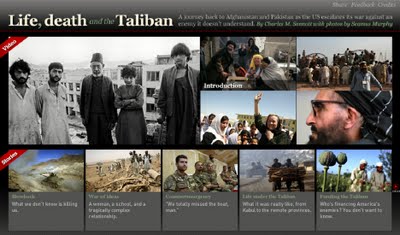 At the summit of Mt. Monadnock
At the summit of Mt. MonadnockTwo years ago, following a six-day, 50-mile backpacking trip with our Boy Scout troop along the Appalachian Trail in the Berkshires, I suggested something different for 2009: the Monadnock-Sunapee Greenway, a 48-mile trail in western New Hampshire that connects those two mountains.
The AT in New England tends to be choked with thru-hikers in August, some of them on the dubious side. And the Greenway between Monadnock and Sunapee was relatively flat, or so I’d been told. So on the clear, sunny morning of Saturday, Aug. 8, four scouts and four adult leaders headed for Jaffrey, N.H., to begin a five-day trip. And ran into trouble almost immediately.
At 3,165 feet, Monadnock is a modest mountain. Now that a tramway has been built to the summit of Mt. Fuji, Monadnock has actually overtaken it as the most-climbed in the world. Yet Monadnock is always harder than it looks, and I say that as someone who’d hiked it six times before, most recently last fall.
 We took a path none of us had hiked — the Birchtoft Trail, up Monadnock’s eastern slope — and then the Red Spot Trail. That turned out to be exceptionally steep, with lots of hand-to-hand climbing up rock faces while wearing full backpacks. The adults were pretty much blasted by the time we reached the summit.
We took a path none of us had hiked — the Birchtoft Trail, up Monadnock’s eastern slope — and then the Red Spot Trail. That turned out to be exceptionally steep, with lots of hand-to-hand climbing up rock faces while wearing full backpacks. The adults were pretty much blasted by the time we reached the summit.
But our day was far from over. At the top we picked up the Dublin Trail (which is co-terminus with the Greenway), which we took to the northern base of the mountain. And from there we hiked to Spiltoir Shelter — one of a series of adirondacks with adjacent tent sites.
Somewhere along the way it began to dawn on me that, at 53, I wasn’t the hiker I’d been even two years ago, though I’d been running and my weight was reasonably good. To go backpacking during a hot week in the summer is to suffer, and I’d known that going in. But, somehow, the suffering-to-enjoyment ratio had shifted into the negative.
As it turned out, the next three days were not flat but, rather, consisted of one sharp, heart-pounding hill after another. We took a few shortcuts, and on one, along a paved road into the tiny village of Washington, I took a hard fall, splitting my knee open and bruising my right hand and wrist badly enough that I thought I might have broken it. That would have made me the second adult to leave the group. Fortunately, by the next morning it felt much better.
It wasn’t until we hit camp the fourth night, at Moose Lookout, that I was confident I would make it to the end. It poured that night. And though my new REI tent performed quite well, the trail on Wednesday was a muddy, sloppy mess. We struggled to the top of Mt. Sunapee (elevation: 2,743 feet) by noon, then took the Summit Trail down to the parking lot. Our week was over. (View in photo at right is from the Sunapee summit.)
 The scouts had no problems, and we adults spent the week trying (and failing) to keep up with them. Three had participated in the 50-miler two years ago. The fourth had climbed Monadnock with a Cub Scout group I’d helped lead when he was barely 5 years old.
The scouts had no problems, and we adults spent the week trying (and failing) to keep up with them. Three had participated in the 50-miler two years ago. The fourth had climbed Monadnock with a Cub Scout group I’d helped lead when he was barely 5 years old.
As for me, my sixth 50-miler was probably my last. I’d gone on three in the 1970s, two as a scout and one as a 21-year-old, helping my old troop. And I’ve gone on three as a scout leader in recent years, starting in 2005, with my son as one of the scouts. It was hard in ’05 and ’07, but it’s harder now.
Sure, I could run more. I could lose another 10 pounds. Realistically, though, that’s not going to happen. Right now, shorter, easier trips in cooler weather sound like the way to go. I’m back in one piece, and there were times last week when I wondered if that would be possible.
Photos of Kennedy and trail sign by John Kuconis.





